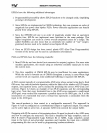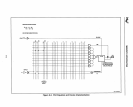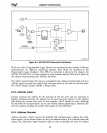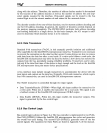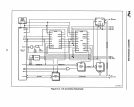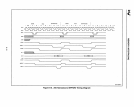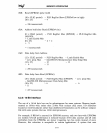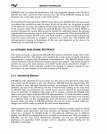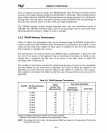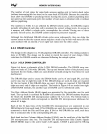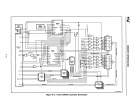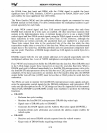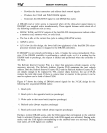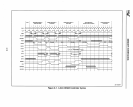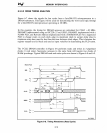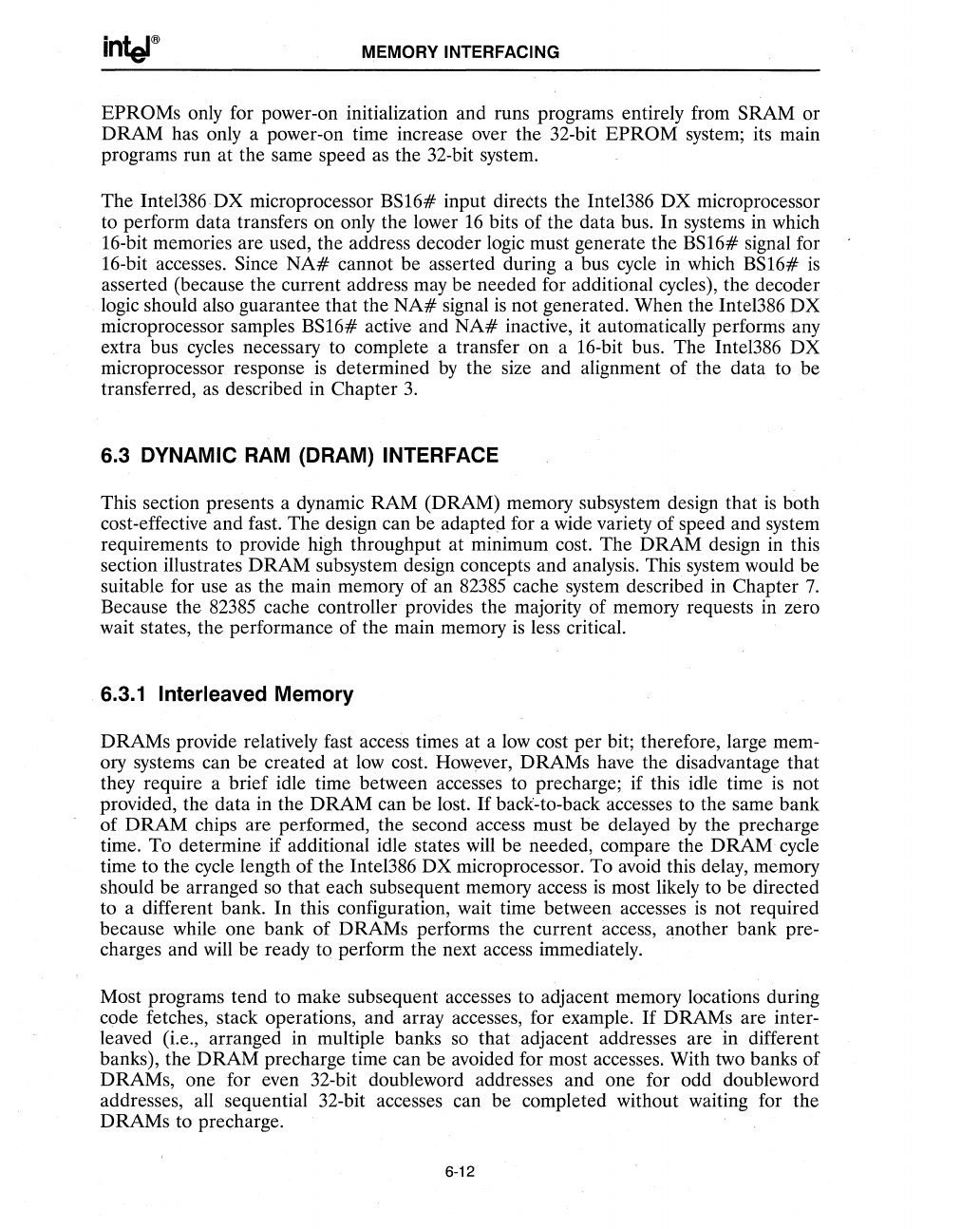
MEMORY INTERFACING
EPROMs only for power-on initialization and runs programs entirely from SRAM or
DRAM has only a power-on time increase over the 32-bit EPROM system; its main
programs run at the same speed as the 32-bit system.
The Intel386 DX microprocessor BS16# input directs the Intel386 DX microprocessor
to perform data transfers on only the lower
16
bits of the data bus. In systems in which
16-bit memories are used, the address decoder logic must generate the BS16# signal for
16-bit accesses. Since
NA#
cannot be asserted during a bus
cycle
in which BS16#
is
asserted (because the current address may be needed for additional cycles), the decoder
logic should also guarantee that the
NA#
signal
is
not generated. When the Intel386 DX
microprocessor samples BS16# active and
NA#
inactive, it automatically performs any
extra bus cycles necessary to complete a transfer on a 16-bit bus. The Intel386
DX
microprocessor response
is
determined
by
the size and alignment
of
the data to be
transferred,
as
described in Chapter
3.
6.3 DYNAMIC
RAM
(DRAM) INTERFACE
This section presents a dynamic RAM (DRAM) memory subsystem design that
is
both
cost-effective and fast. The design can be
adapte!i for a wide variety of speed and system
requirements to provide high throughput at minimum cost. The DRAM design in this
section illustrates DRAM subsystem design concepts and analysis. This system would be
suitable for use
as
the main memory of an
82385
cache system described in Chapter
7.
Because the
82385
cache controller provides the majority of memory requests in zero
wait states, the performance of the main memory
is
less critical.
6.3.1 Interleaved Memory
DRAMs provide relatively fast access times at a
low
cost per bit; therefore, large mem-
ory systems can be created
at
low
cost. However, DRAMs have the disadvantage that
they require a brief idle time between accesses to precharge; if this idle time
is
not
provided, the data in the DRAM can be lost.
If
back-to-back accesses to the same bank
of DRAM chips are performed, the second access must be delayed
by
the precharge
time. To determine if additional idle states
will
be needed, compare the DRAM
cycle
time to the cycle length of the Inte1386 DX microprocessor. To avoid this delay, memory
should be arranged so that each subsequent memory access
is
most likely to be directed
to a different bank. In this configuration,
wait· time between accesses
is
not required
because while one bank of DRAMs performs the current access, another bank pre-
charges and will be ready to perform the next access immediately.
Most programs tend to make subsequent accesses to adjacent memory locations during
code fetches, stack operations, and array accesses, for example.
If
DRAMs are inter-
leaved (i.e., arranged in multiple banks
so
that adjacent addresses are
'in
different
banks), the DRAM precharge time can be avoided for most accesses. With two banks of
DRAMs, one for even 32-bit doubleword addresses and one for odd doubleword
addresses, all sequential 32-bit accesses can be completed without waiting for the
D RAMs to precharge.
6-12



